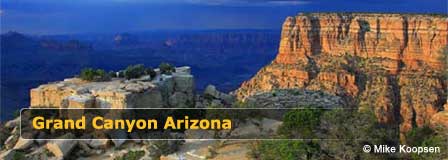Grand Canyon Wildlife
With the diverse landscape, habitat and elevation change from the top of the Rims to the Canyon floor, there is a wide variety of wildlife animals in the Grand Canyon National Park. It is important to remember that no matter how adapted to humans the animals may be, they are wild animals and some are capable of biting and even attacking if provoked. When viewing wildlife, do not approach them and do not feed them. It is not healthy for wildlife to get used to depending upon humans for food.

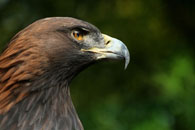
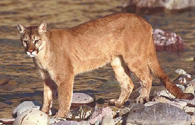

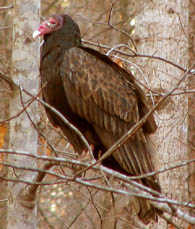
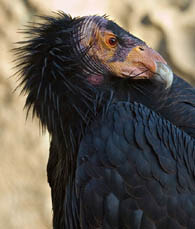
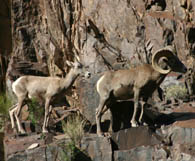

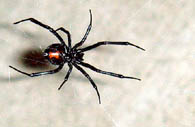

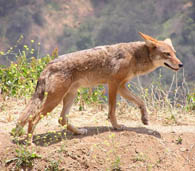
Wild Mammals
Canyon Bats. Bats are mammals, not birds. They are most often seen at sunset when they begin to feed on flying insects.
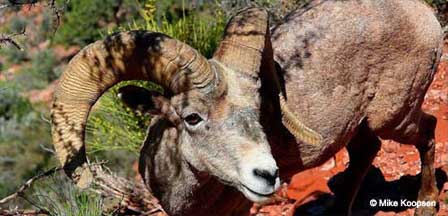
Bighorn Sheep. Big Horn Sheep love rocky terrain and canyon walls. The are sure-footed animals and it is amazing how they can climb, walk and jump around sheer cliffs which is most often where you will find them. Read more about Arizona Big Horn Sheep.
Coyotes. You're apt to see a coyote anywhere at the Grand Canyon whether at the top of the rims or inside the canyon. They look like lanky dogs and feed primarily on rodents and carrion. They've adapted to being around humans and will forage around campsites and garbage containers. Read more about Arizona Coyotes.
Cottontail Rabbits. You will often see Cottontails anywhere feeding on native grasses, berries and vegetation. Their "cotton white" tails are the giveaway. They are always observant to the danger of bobcats and coyotes.
Elk. They are huge animals related to the deer family but are more distinct and much larger than a deer. Bull elks can weigh as much as 1000 pounds and stand 5 feet high at the shoulders. The bulls grow large racks of antlers every year and the cows have no racks. They feed on grasses on the floor of the forested areas. They are frequently seen roaming the forest on the South Rim near Grandview Point and along the entrance to the North Rim. Read more about the Arizona Elk.
Mountain Lions. Mountain lions are seldom seen because they avoid getting close to humans but they do habitat the canyon and are occasionally spotted. They are the largest of wild cats in North America and can weigh 200 pounds and can reach 6 feet long. They prey on deer and elk. They were hunted almost to extinction in the canyon area, but have made a strong come-back. They are most often seen at the North Rim where it is estimated that over 100 roam that area. Although there have been reported attacks by Mountain Lions upon people, such cases are very rare. Read more about the Arizona Mountain Lion.
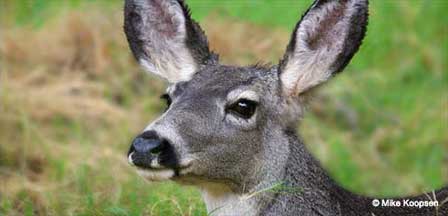
Mule Deer. These are the most frequently sighted animals in the Grand Canyon National Park South Rim. These graceful animals can weigh up to 200 pounds. Drive carefully at night because Mule Deer will often dart in front of cars. They feed on bushes and shrubs.
Raccoons. These "masked bandits" are common in the rim campgrounds.
Ringtail Cats. They really are not cats but members of the raccoon family. And like raccoons and skunks, they forage for food in campgrounds. The Ringtail Cat is a rather unusual-looking creature that loves to climb. They have big round eyes, a long tail with white bands and mouse-like ears. If cornered they will spray an awful smelling mist similar to a skunk. They are nocturnal and feed on mice. Read more about the Arizona Ringtail Cat.
Squirrels. Squirrels are just about everywhere begging for food, but do not feed them. There are three types of squirrels at Grand Canyon National Park. The "Albert" squirrel primarily lives at the South Rim. They are gray with a reddish back, fluffy white tails and have tufted ears. The Kaibab squirrel looks very similar but without the reddish back and only live at the North Rim. There are also "Golden Mantled" ground squirrels that look much like an over-sized Chipmunk.
Birds In The Grand Canyon
California Condor. The most interesting bird at the canyon is the very rare California Condor which was once nearly extinct. They are still on the endangered list. There are captive breeding programs that ultimately release Condors into controlled territories of which the Grand Canyon is one. As of March 2008, there were 297 condors known to be living, including 146 in the wild. The Condor has the largest wingspan of any bird in North America. The wingspan of an adult averages 9 feet. Essentially, the Condor is a vulture that some think is cute while other deem as ugly. It is black with white under wings and a bald head that ranges from yellow to red in color. If you are lucky enough see a Condor at the canyon, you will be quite impressed.
Bald Eagles. The Bald Eagle is the symbol of America and is a gorgeous animal that has a wingspan of about 6 feet. It has dark plumage, a white head and tail, and yellow beak. During winter, bald eagles frequently sit in trees along the river in the eastern canyon, where they zoom down and swoop fish from the waters with their long talons. Read more about the Bald Eagle.
Black Ravens. These shiny blue-black birds soar like raptors above the rims when not walking like people around the campgrounds. They reach an average size of about 2 feet long and are smart. In addition to unzipping packs and opening food containers, they've been known to team up and take trout from bald eagles. The common raven lives on the South Rim and is the most frequently-sighted bird there. They can become a pest.
Golden Eagles. The Golden Eagle is often mistaken for a Bald Eagle. But it doesn't have a white head and is reddish brown in color. Unlike the Bald Eagle which feeds on fish, it feeds on smaller mammals and when it spots prey during soaring, it can tuck its wings and dive at speeds reaching a 100 miles per hour. Read more about the Golden Eagle.
Peregrine Falcons. Once on the endangered list, the numbers of Peregrine is on the rise and the Grand Canyon is home to the largest population in America. The Peregrine Falcon is one of the fastest birds in the world that can reach diving speeds of nearly 125 MPH. It has "cycle-shaped" wings and primarily preys on water fowl such as ducks.
Red Tailed Hawks. The flying traits of the Red Tailed Hawk is similar to the eagle but with a wingspan of 4 feet, it is much smaller than an eagle. Identifiable by its white underside, reddish tail, brown head, and brown back, the red-tailed hawk sometimes drops rattlesnakes from great heights to kill them.
Turkey Vultures. The Turkey Vulture is the scavenger of the canyon as it soars above looking for carrion. It looks similar to the California Condor but is much smaller with an average 6 foot wingspan. It has dark plumage and a bald red head. Since the Turkey Vulture has a better sense of smell and can better locate carrion, the Condor will follow it around.
Wild Turkeys. Wild Turkeys are colorful and stately birds, particularly the male. They have bare blue heads, red wattles and a chest with 6 inch ling feathered beards. Although they exist on both sides of the Grand Canyon, they are mostly seen in the meadows on the North Rim.
Reptiles In The Park
Chuckwalla Lizard. The shape of Chuckwallas resemble an Iguana except in color. They have baggy skin and a "pouchy" area under the chin. They are the largest lizard in the US at about 11 to 16 inches long. Both male and female are blackish gray in color but the male has a rusty orange tail. When threatened, a Chuckwalla can crawl into a rock crevice and inflate it's skin to tightly wedge themselves into the crevice. Although they look menacing, they are shy of people and are not harmful. Read more about the Arizona Chuckwalla.
Collared Lizards. The Collared Lizard can reach a length of 14 inches and exists in different varieties each with different colorizations. They have large heads, long tails and have two black bands across the shoulders. The most colorful variety has blue, green and yellow markings. They are found mostly in the middle to lower elevations of the canyon and are not shy of people and are not harmful.
Grand Canyon Rattlesnakes. If you are hiking below the rim and here something "rattling", it could be a Grand Canyon Rattlesnake. They are poisonous, so stop until you can identify the source of the sound. The Canyon Rattlesnake is pinkish in color and blends into the rocky terrain and cliff walls. A rattlesnake will avoid humans and it rattles to warn people that they are getting too close. Usually if you remain still, the snake will slither away. Although rare, rattlesnake bite victims are typically those that will chase and try and capture the snake. There are other species of rattlesnakes in the canyon, but the behavior of all varieties are similar. Read more about Rattlesnakes found in Arizona.
Horned Toads. It's not a toad, but a lizard and looks like a miniature dinosaur from prehistoric days. They are rarely seen and completely harmless although if threatened can "shoot" a spurt of blood from its eye capillaries. They are round in shape, brownish gray in color, have a short tail and have what appears to be sharp pointy spines on their body. They range from about 3 to 5 inches long. Read more about the Horny Toad.
Poisonous Invertebrates
There are three poisonous creatures in the Grand Canyon. In addition to the rattlesnake, a female black widow spider and scorpion will inject poisonous venom.
Black Widow Spider. Only the female is poisonous, She is recognized by a bright red hourglass shape on her abdomen which is brilliant on her otherwise totally jet black body. They weave webs in dark spots like canyon wall crevices and behind objects. Her bite is lethal enough to endanger young children.
Scorpions. A scorpion has two pincers and a long tail that curls up and above its body. At the end of the tail is a stinger that delivers a whip-like venom strike at its prey which is mostly other insects. There are two types of scorpions found at the canyon. The most common is the Giant Hairy Scorpion which is tan-colored and about 3 to 4 inches long. Its sting and venom is not much worse than that of a bee sting. The other is the smaller Bark Scorpion which is the color of straw and about 2 inches long. Its venom is much stronger and not only can cause severe pain. Although rare, the sting can be deadly. They are most active at night and will glow in the dark when blacklight (ultraviolet) is shined on them. Read more about Scorpions.
Related Reading & Viewing
The Spectacular Grand Canyon

